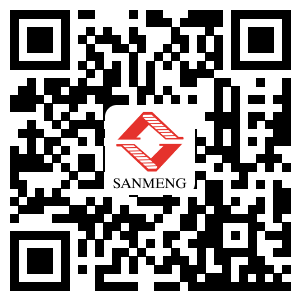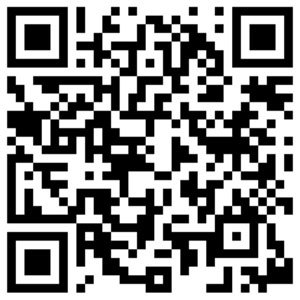The biggest difference between digital printing and traditional printing
Release time:
2023-03-02 14:47
Source:
The biggest difference between digital printing and traditional printing is that the printing process from computer to paper is directly completed without film production and PS printing. Its imaging principle is also similar to that of offset printing. It is suitable for small batch and personalized printing. You can have a few at least and a hundred at most. If you want to have several books belonging to yourself, such as souvenir books, travel notes, photo albums, etc., digital printing is the most economical and ideal method.
The task principle of the digital printer is to charge a layer of electric charge on the surface of the recording drum with the electrical appliance. The printer controller will print the dot matrix information of the content (such as characters) onto the charged recording drum surface in the form of a laser beam to release the electric charge in all directions required by the non-printing point. When the recording drum rotates to the toner box, the electric charge in the direction required by the printing point will attract the toner, When the recording drum with the glyph of toner is turned to the transfer equipment, the printing paper is between the recording drum and the transfer equipment. The stronger reverse charge added on the transfer equipment will lead the glyph of toner on the recording drum to the printing paper. The heating part will solidify and dry the toner on the paper. It is the glyph that has been firmly stored on the printing paper to end the printing process.
There are three printing scales for digital printing: A4 (297mm × 210mm)、A3(420mm × 297mm) and SRA3 (450mm × 320mm)。 Digital printing is suitable for printing paper with thickness between 80g and 250g.
Digital printing is applicable to a variety of documents. In addition to professional manufacturing software, working software and even print can be used. Of course, the most standard is to supply electronic documents in PDF format, which will make the printing process convenient and accurate. Digital printing can achieve the following: take it as soon as possible, and the copy is abnormal.
NEWS
What is the packaging of PTP aluminum foil
PTP packaging (Press Through Packaging) PTP is the abbreviation of Press Through Packaging, which is literally translated as "packaging through pressure". In the industry, the more formal name is aluminum foil for drug packaging, also known as aluminum foil for blister packaging. PTP aluminum foil is a common saying in Asia, not a complete expression. The English expression of PTP aluminum foil in Europe is push-through foil, which is translated into Chinese as "pushable aluminum foil". The title of PTP aluminum foil used in drug packaging materials and container registration certificates in China is: PTP aluminum foil for pharmaceutical packaging. PTP aluminum foil is a kind of packaging material. For example, some of our common capsules often have some silver packaging outside, that is, PTP aluminum foil
The biggest difference between digital printing and traditional printing
The biggest difference between digital printing and traditional printing is that the printing process from computer to paper is directly completed without film production and PS printing. Its imaging principle is also similar to that of offset printing. It is suitable for small batch and personalized printing. You can have a few at least and a hundred at most. If you want to have several books belonging to yourself, such as souvenir books, travel notes, photo albums, etc., digital printing is the most economical and ideal method.
The global salty snack market is expected to grow from US $94.5 billion in 2015 to US $138.2 billion in 2020 (GlobalData, 2016), and the definition of snacks is also changing due to consumers' concern about health.
In the packaging industry, "three products" refer to the variety, quality and brand of packaging products. In 2018, the variety of packaging products will increase significantly, the quality of packaging products will be significantly improved, and the cultivation of packaging product brands should be strengthened.
Introduction of Pharmaceutical Packaging Materials
Pharmaceutical packaging refers to the general term of a processing process that uses appropriate materials or containers, and uses packaging technology to divide (fill), seal, pack, label and other operations on the semi-finished or finished products of pharmaceutical preparations, providing quality assurance, identification trademarks and instructions for drugs. The drug packaging itself can be understood from two aspects: from a static point of view, packaging is to use relevant materials, containers, auxiliary materials and other materials to package drugs and play its due role; From a dynamic point of view, packaging is a technical method using materials, containers and auxiliary materials, and it is a process and operation. The role of drug packaging in the field of circulation on schedule can be divided into inner packaging and outer packaging. Its functions mainly include three aspects, namely, protection function, convenient application and commodity publicity.
Packaging material: aluminum foil
Aluminum foil, an efficient and fashionable material, has opened a new market. We are proud of our achievements in making aluminum foil a multifunctional, modern and technologically sophisticated material for packaging, household aluminum foil and many industrial markets. Processors, brand owners, retailers and end consumers with a history of more than 100 years have benefited from the unique barrier properties of aluminum foil, which provide a complete barrier to light, moisture and fragrance.
Fax:+86-754-82125575
Address:No.5, East Side, Northern Industrial Area, Second Section, Yuepu Street, Jinping District, Shantou

Miss Chen (WeChat)

Mobile website

Alibaba
Copyroght © 2023 San Meng Aluminum Film Packaging Co. Ltd.
Powerd by:www.300.cn SEO Business license



